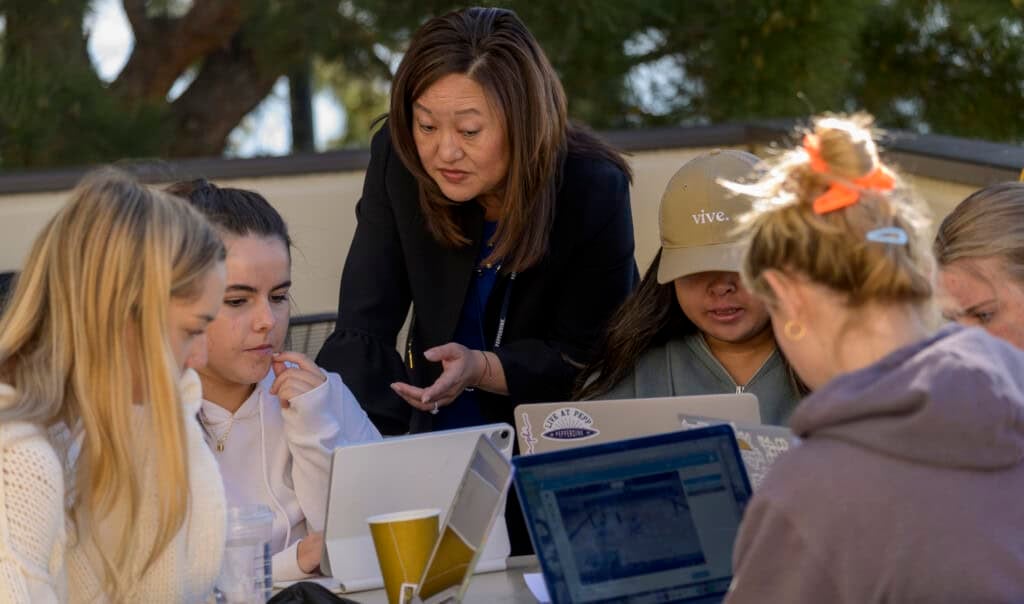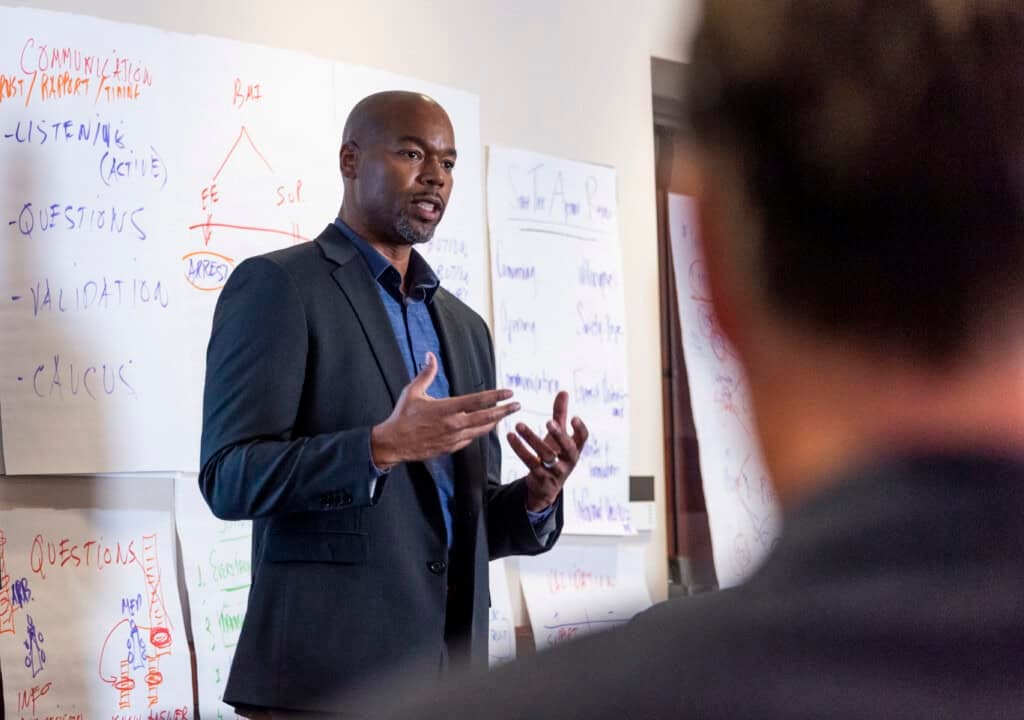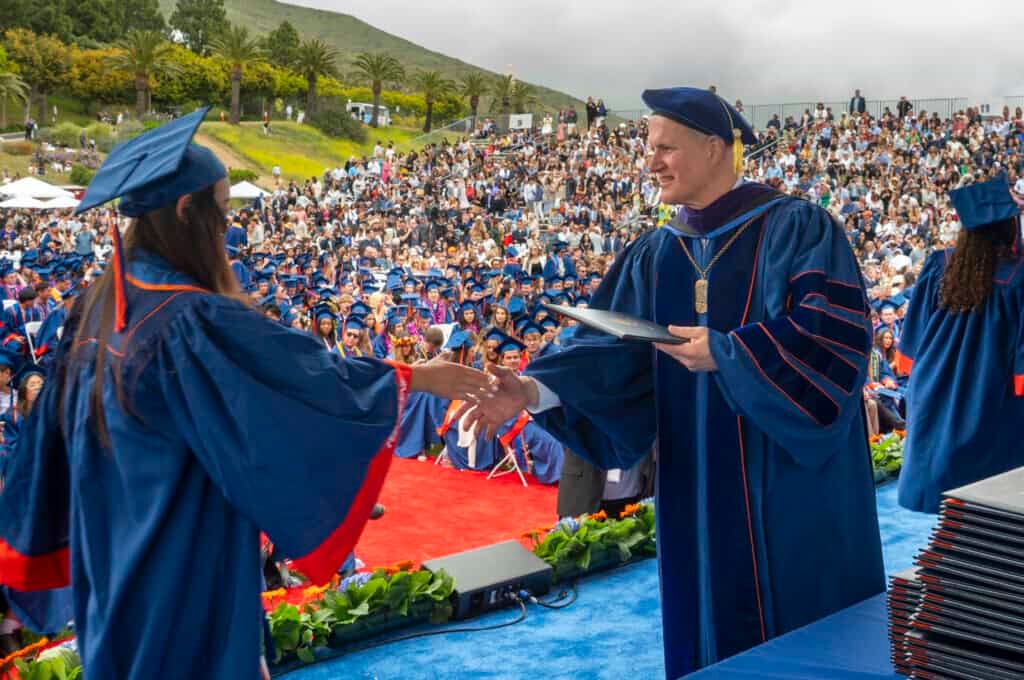
Pepperdine University: Data-Driven Campaign Strategy Leads to Confident Future
Client Profile
Institution: Pepperdine University
Contact: Aaron Borsellino, Vice Chancellor of Advancement Services and Campaign Director
Challenge: Determine if the university should pursue an unprecedented fundraising goal while optimizing prospect engagement strategies.
Marts&Lundy Service: Capacity Analysis
The Challenge
When Pepperdine University began planning its most ambitious campaign yet, it faced a fundamental question: Do we truly have the philanthropic capacity to reach this goal?
Their previous, highly successful campaign had raised about $450 million, but University President Jim Gash had an even bolder vision in mind. For Aaron Borsellino, Vice Chancellor of Advancement Services and Campaign Director, the answer would come through data. “We needed either reaffirmation that our goal was realistic—or we needed to reset expectations.”
The Approach
Partnering with Marts&Lundy, Pepperdine conducted a comprehensive Capacity Analysis that would offer both confirmation and strategic direction. The analysis included:
- Deep data examination of Pepperdine’s donor and prospect base
- Comprehensive capacity and likelihood modeling to identify high-potential prospects
- Staffing analysis of fundraiser performance against campaign requirements
- Analysis of managed prospects to align prioritization
The analysis was shared with both university leadership and frontline fundraisers to ensure broad understanding and buy-in.

Key Discoveries and Strategic Actions
The Capacity Analysis revealed exciting opportunities that immediately shaped Pepperdine’s campaign strategy, and the team took swift action on each insight.
Abundant High-Capacity Prospects Drive Campaign Confidence
The university discovered ample high-capacity individuals to support their ambitious goal. “To see the high-end estimates of what could be raised come in well above some of the aspirational targets that had been discussed was reaffirming of what we could do,” Borsellino notes. This finding gave the leadership team confidence to proceed with a more aspirational goal in mind.
“To see the high-end estimates of what could be raised come in well above some of the aspirational targets that had been discussed was reaffirming of what we could do.”
— Aaron Borsellino, Vice Chancellor of Advancement Services and Campaign Director, Pepperdine University
Portfolio Optimization Opportunities Unlock Hidden Potential
“It was eye-opening for our executive team,” Borsellino noted. “We had the prospects, but we identified an opportunity to prioritize them more effectively.”
The analysis revealed considerable opportunities to optimize portfolio composition. There were high-capacity, high-likelihood prospects that were unassigned while others with less alignment to strategic goals remained in active portfolios. “It provided us with a clear illustration of the people that not only are high capacity but have really raised their hands,” says Borsellino. “It really supported this notion of portfolio optimization.”
Immediate Action: Pepperdine executed a complete portfolio cleanup, removing about 30% of lower-likelihood prospects rated at $500,000 and below. “It was a complete realignment,” said Borsellino. “But it was grounded in data—and it gave us confidence.” These spots were backfilled with high-likelihood prospects—about two-thirds coming directly from high-likelihood groups identified in the analysis.
Untapped Growth Opportunities Inspire Strategic Expansion
Data revealed significant concentrations of high-capacity, high-likelihood prospects in underserved regions and constituencies. “We found many high-likelihood, high-capacity prospects in specific segments, which helped us quickly pinpoint the most impactful staffing hires we should make next,” Borsellino explains.
“We found many high-likelihood, high-capacity prospects in specific segments, which helped us quickly pinpoint the most impactful staffing hires we should make next.”
Strategic Response: Based on these opportunities, Pepperdine created new fundraising roles, including a Pacific Northwest officer and a dedicated parent giving officer at the principal gift level. “The data made our next steps crystal clear,” he said.

Enhanced Prospect Engagement Through Digital Innovation
The analysis also accelerated Pepperdine’s move toward digital engagement, expanding prospect management beyond traditional major gift assignments. “A shortage of prospects isn’t our challenge—prioritization is,” Borsellino said.
Digital Solution: Pepperdine launched a Digital Experience Officer program, doubling the number of managed prospects and creating a tiered engagement model. “We used to have 2,500 major gift assignments, and everyone else was simply categorized as either assigned or not. But now, we’ve introduced a tiered system that allows for more nuanced engagement,” explains Borsellino.
Data Integration for Ongoing Success
To ensure the insights became part of ongoing operations rather than a one-time exercise, the team integrated Marts&Lundy’s likelihood scores directly into their CRM system. “We immediately loaded the scores into our instance of Raiser’s Edge,” says Borsellino, incorporating them into ongoing rating processes and strategic planning.
The Results
The Capacity Analysis has transformed how Pepperdine approaches fundraising and campaign planning:
Executive Leadership Engagement: “On a monthly basis in the President’s strategy meeting, if not more frequently, it’s alluded to by President Gash,” Borsellino reports. “The analysis helped us drive decisions at every level—from fundraisers to executive leadership.”
“The analysis helped us drive decisions at every level—from fundraisers to executive leadership.”
Fundraiser Enthusiasm: Gaining an in-depth understanding of how the analysis was conducted was a critical step for the development team and the portfolio clean up that followed. “It was extremely well received and led to some impactful actions. Additionally, I can’t tell you how many people have asked for the full data set. They want to go in and do their own prospecting,” Borsellino notes. “We don’t usually see them engage so deeply with data in that way.”
Strategic Planning: The team continues using the analysis for gift table refinement, ensuring they have sufficient prospects at the $2.5–10 million level to sustain campaign momentum.
Cultural Shift: “It’s become part of our regular planning conversations,” said Borsellino. Perhaps most importantly, the analysis created a culture of confidence and data-driven decision making across the advancement team.

The Marts&Lundy Experience
“We knew that there wasn’t a question that Marts&Lundy hasn’t had a solution to.“
— Aaron Borsellino, Vice Chancellor of Advancement Services and Campaign Director, Pepperdine University
When asked why Pepperdine chose Marts&Lundy, Borsellino explained, “Marts&Lundy is very well respected in the industry; they’re the gold standard for campaign leadership and counsel.”
When describing the experience of working with Marts&Lundy, Borsellino chose “reaffirming” and “confidence building,” noting that “there are a lot of things that we operate on without complete certainty, and having the firm’s depth of experience to affirm what we’re looking at—it’s confidence building in that way too.”
“Marts&Lundy gave us confidence in the goal and a roadmap to get there,” said Borsellino. “That’s the value of working with the firm—reaffirming, confidence-building, and always rooted in real data.”